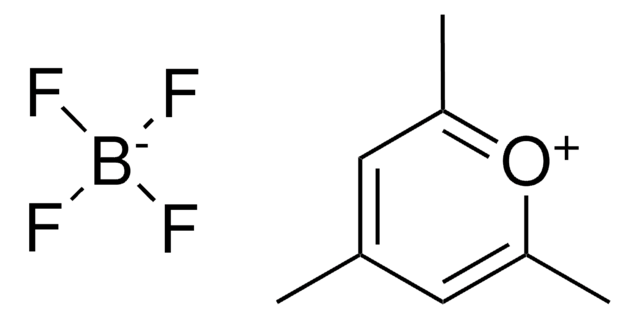906719
Pyrylium tetrafluoroborate
≥95%
Synonym(s):
Pyry-BF4
About This Item
Recommended Products
Assay
≥95%
form
powder
storage temp.
2-8°C
Application
Storage Class Code
11 - Combustible Solids
WGK
WGK 3
Flash Point(F)
Not applicable
Flash Point(C)
Not applicable
Certificates of Analysis (COA)
Search for Certificates of Analysis (COA) by entering the products Lot/Batch Number. Lot and Batch Numbers can be found on a product’s label following the words ‘Lot’ or ‘Batch’.
Already Own This Product?
Find documentation for the products that you have recently purchased in the Document Library.
Related Content
The main focus of the Cornella research group is the development of rapid, practical and efficient methodologies for organic synthesis. In addition to efficiency and practicality, the group is highly interested in discovering new reactivity with the aim of unveiling novel transformations. More specifically, on the fundamental understanding and application of catalytic processes and the development of simple reagents. These two approaches have enormous potential and impact across the chemical sciences.
Our team of scientists has experience in all areas of research including Life Science, Material Science, Chemical Synthesis, Chromatography, Analytical and many others.
Contact Technical Service








